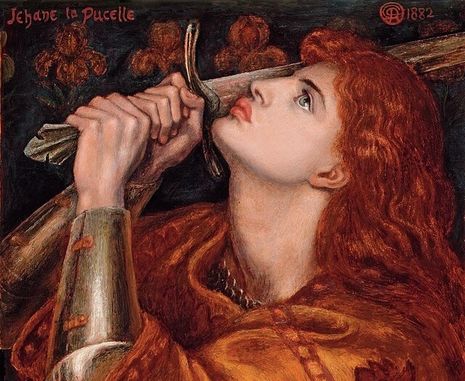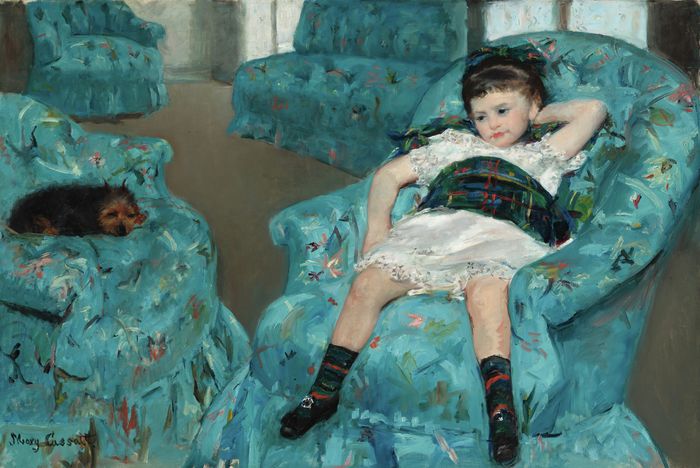Reframing the Rossettis
Unearthing a new-found appreciation for the old-school, Loveday Cookson shares her review of The Rossettis at the Tate Britain

“I care not for my Lady's soul / Though I worship before her smile”
– The Lust of the Eyes, Elizabeth Siddal
‘Remember’ by Christina Rossetti. The only poem written by a woman in my A-level anthology, and the first poem I studied that year without the barrier of a laptop screen. Tucked in a corner of my classroom on a crisp April morning, I spend embarrassingly little time looking at the material. I make annotations in pencil – ripples of grey on white – as nothing I can think of feels worth cementing in ink. Maybe I’m more focused on filling in the blanks of days I’ve spent away from my friends, or maybe it’s a product of the way we are made to “worship” before Rossetti. Her “smile” is housed in the beauty of her poetry, but does the perfect recitation that school demands ruin her beauty for us? Does it stand in the way of us looking at her “soul”? Tate Britain’s new exhibition The Rossettis paints Christina Rossetti as more than a reminder of the struggle to pay attention in a post-Zoom world – but as key to the Pre-Raphaelite movement. Dante Rossetti, her brother, is mostly seen as a punctuating piece of context, and his wife Elizabeth Rossetti née Siddal is altogether vacant. I wonder, will I ever ‘Remember’ them – come up with something that warrants a pen – or will they remain confined to the tedium of Friday morning English lessons?
A spontaneous catch-up spelled mild disaster for my friends and I, as we failed to check the forecast. Practicality became as fantastical as a blue sky, standing in the torrential grey of central London. Our lack of forethought became palpable as our grips tightened around umbrella handles. Tate Britain – adorned with posters advertising their latest exhibition The Rossettis – answered the question of how to fill the bleak afternoon. Saturated with dense, vibrant colour, the posters depict the work of Dante. His subject: a woman with red hair, an impossibly long neck (his usual choice of model) and an arresting gaze. The painting makes no attempts at photorealism but indulges in romanticised beauty – the kind echoed in Christina’s verse. For the first time I stop and really engage with the Rossettis, with nothing but pure curiosity.
“Who is Christina Rossetti and do we do her a disservice with our estimations?”
The Tate Collective gave us £5 tickets – a sigh of relief for our bank balances, especially under the shadow of an expensive May Week. The exhibition describes itself as following “the romance and radicalism of the Rossetti generation”. Christina’s verse adorns the sparse walls – snatches of poetry set against sheets of grey. Not overwhelmed by volume or complexity, we are able to simply read, just as the posters allow us to simply see. The Tate has distilled the essential questions she asks: “who shall wall / Self from myself, most loathed of all?” Christina reckons, as the gallery does, with the relationship with the self, and others. Who is Christina Rossetti and do we do her a disservice with our estimations?
Throughout, there is a pervading dedication to the contributions of both female Rossettis to the Pre-Raphaelite ‘brotherhood’. Delicate sketches and fragments of their verse radiate a quiet beauty that the gallery has captured; they command the room. The exhibition’s sparsity allows them the freedom to speak for themselves, contextualised using their own verse.
“The exhibition has captured something I’d lost in navigating the education system”
Just as the exhibition is radical in its size and unwavering inclusion of women, I believe our approach to the artists needs to be as radical as the figures themselves – that is not to say that they should be excluded from the classroom, but we must be adventurous with our explorations, and try to understand more than just their “smile”. The second declaration in the Pre-Raphaelite doctrine is “to study Nature attentively, so as to know how to express them”; without this intense study of their “soul” we will always fall short of knowing quite “how to express them”, bound forever to pencils not pens. Schools are undoubtedly doing their best in the hard-set circumstances, especially in consideration of the last few years. There is neither the time nor resources for the exploration the exhibition demands, but maybe they can offer something else; maybe they can inspire a curiosity and fascination that can be pursued externally, in conjunction with accessibility schemes like the Tate Collective.
We reemerge from the gallery – the obligatory postcards are tight between our fingertips – the rain has stopped. The exhibition has captured something I’d lost in navigating the education system, but as Christina commands, “if you should forget me for a while / And afterwards remember, do not grieve”: The Tate reinvigorates figures we may “forget” somewhere along the line, lost in the intricacies of verse and the pursuit of success, without instilling guilt and forcing us to “grieve”. We are encouraged to embrace their “souls”, their work, their relationships, so that one day we may do more than blindly “worship” them: we may begin to genuinely like them.
The Rossettis is showing at the Tate Britain until 24/09.
 Comment / Cambridge is right to scrap its state school target1 May 2024
Comment / Cambridge is right to scrap its state school target1 May 2024 News / Academics call for Cambridge to drop investigation into ‘race realist’ fellow2 May 2024
News / Academics call for Cambridge to drop investigation into ‘race realist’ fellow2 May 2024 News / Gender attainment gap to be excluded from Cambridge access report3 May 2024
News / Gender attainment gap to be excluded from Cambridge access report3 May 2024 News / Cambridge postgrad re-elected as City councillor4 May 2024
News / Cambridge postgrad re-elected as City councillor4 May 2024 Comment / Accepting black people into Cambridge is not an act of discrimination3 May 2024
Comment / Accepting black people into Cambridge is not an act of discrimination3 May 2024





